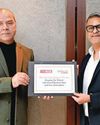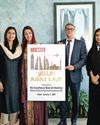
A Metro-3 is one of the most crucial urban infrastructure projects in India. Once fully operational, Metro-3 will cater to 17 lakh passengers daily with an unfailing frequency of four minutes. In addition to connecting areas that are not connected to suburban railways, it will link six major business and employment centres Nariman Point, Cuffe Parade, Fort, Lower Parel, BKC and SEEPZ/ MIDC. Also, it will give easy access to more than 30 educational institutes, 13 hospitals, 14 religious places and more than 30 recreational facilities along with access to both domestic and international terminals of the airport. It will also provide seamless integration with other metro routes, suburban rail, monorail and bus services.
This environment-friendly mode of transit will also help in reducing fuel consumption, carbon emission and traffic congestion. When Metro-3 is up and running, the corridor will reduce 2.61 lakh tonne of CO2 emissions per annum.
Q Environmentalists had raised concerns over this project, especially the car depot in Aarey. How did you address those?
A By being very transparent about it. We did not hide a single piece of information. We knew the environmentalists were sometimes extreme in their views. Nevertheless, we went through every objection they raised, and tried to test all our actions against those. Where there were shortcomings, we complied with them. No other government organisation has been under such scrutiny.
[The environmentalists] had also approached various regulatory authorities and courts. The High Court has appointed a committee under a district judge-level officer; activists are also part of that committee. For the past seven years, the committee has been monitoring each and every action of ours, which was taken in favour of greening.
Q Could you share details about the coastal road?
This story is from the March 03, 2024 edition of THE WEEK India.
Start your 7-day Magzter GOLD free trial to access thousands of curated premium stories, and 9,000+ magazines and newspapers.
Already a subscriber ? Sign In
This story is from the March 03, 2024 edition of THE WEEK India.
Start your 7-day Magzter GOLD free trial to access thousands of curated premium stories, and 9,000+ magazines and newspapers.
Already a subscriber? Sign In

Lessons in leadership
When I began my career at Hindustan Lever (as HUL was then called), I was deeply inspired by our chairman, Dr Ashok S. Ganguly.

Political colours
One of the greatest fashion statements of recent times was made in the Parliament's winter session by Rahul Gandhi and some opposition colleagues. India's most news-making politician (since his landmark Bharat Jodo Yatra) gave up his signature white polo T-shirt for a blue one.

Chat roam
Vox pop content is seeing an uptick in India, with creators making conversations on current and social issues fun and funny

Back home with BANNG
Michelin star-winning chef Garima Arora, who recently opened her first restaurant in India, on all things food and family

One supercalifragilisticexpialidocious New Year
Once Christmas is over, tension mounts in our home as the little woman and I start ticking off the days. We both remain on edge because we dread the coming of the New Year—a time when the whole world goes crazy and adopts resolutions. We, too, make New Year promises and our ‘list of past resolutions’ is very long and impressive. Unfortunately, we are complete failures at keeping them and our ‘list of resolutions not kept’ is equally long and equally impressive.

Six or out?
Cricket is a quasi-religion in India. And our pantheon of cricketers is worshipped with a fervour bordering on hysteria.

DOWN AND UNDER THE WEATHER
After their flop show in Australia, Virat Kohli and Rohit Sharma will have to live on current form rather than past glory

The new in news
THE WEEK and DataLEADS partner to revolutionise news with fact-checks, data and Live Journalism

Hello Middle East
Reem Al-Hashimy, UAE minister of state for international cooperation, inaugurates a special Middle East section on THE WEEK website

BAIT CLICK
Dark patterns fool millions of Indians every day. The government is finally acting, but it just may not be enough